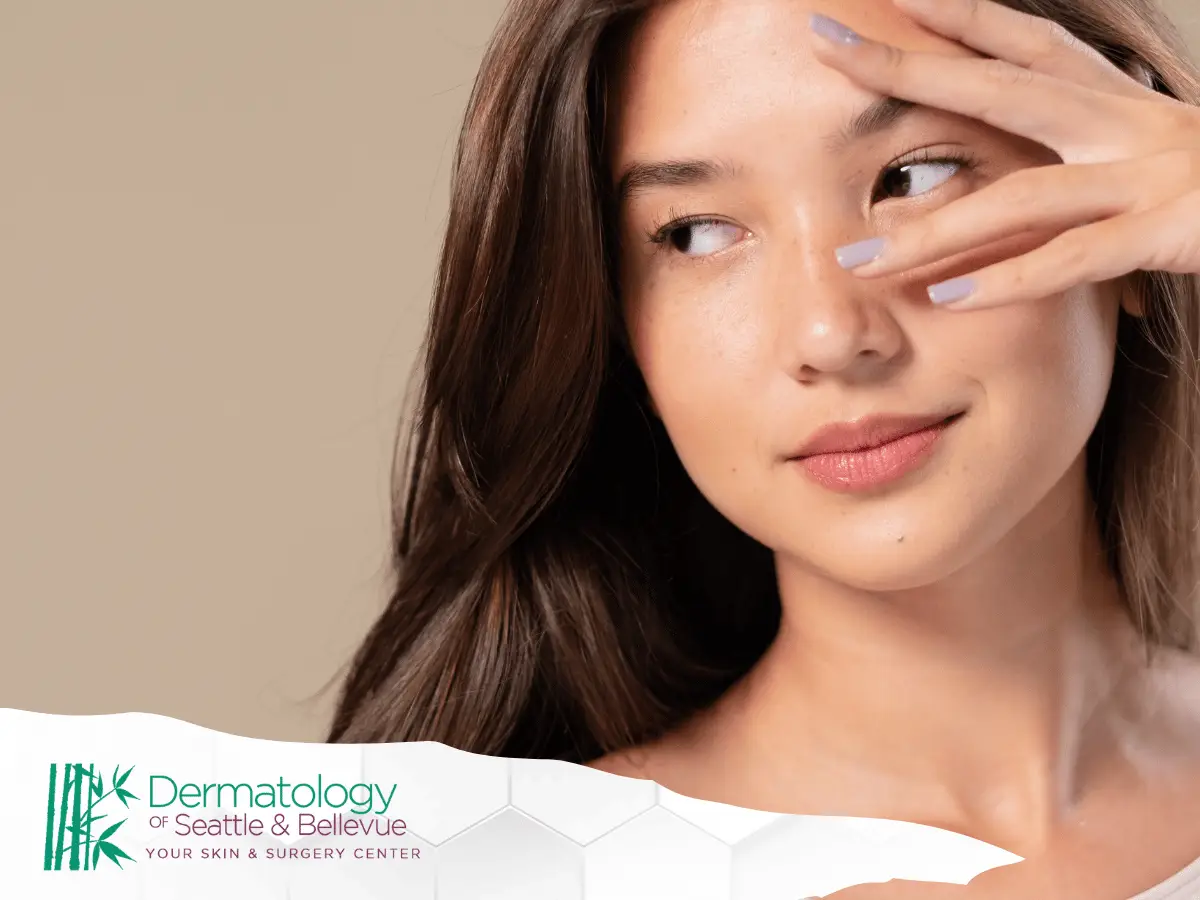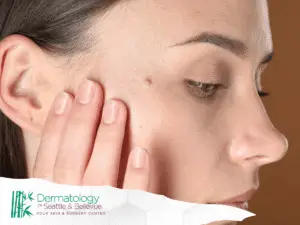At-Home Laser Devices Do They Deliver Clinic Results
In recent years, the market for at-home laser devices has flourished, promising professional-level results without the need for a clinic visit. As a seasoned dermatologist, I often encounter patients curious about these devices, questioning their efficacy and safety compared to in-office treatments. In this article, we will explore whether at-home laser devices can indeed deliver the results they promise, particularly in the realm of hair removal and skin treatments.
At-home laser devices have become increasingly popular for their convenience and the allure of cost-effective, private treatment options. With claims of effectively addressing unwanted hair, acne scars, and even signs of aging, these devices promise a lot. But can they truly match the results of clinic-based treatments?
A Growing Market
The market for at-home laser devices is expanding rapidly, driven by advancements in technology and increasing consumer interest in DIY beauty solutions. Many people are attracted to the idea of performing treatments at their own pace, in the comfort of their homes. This trend is fueled by effective marketing and the promise of achieving salon-like results without leaving the house.
Technology Behind the Devices
At-home laser devices utilize various technologies such as Intense Pulsed Light (IPL), diode lasers, and infrared light. Each technology serves a different purpose, targeting specific skin concerns like hair removal, acne treatment, or skin rejuvenation. Understanding these technologies is crucial for consumers to make informed choices about which device suits their needs best.
Accessibility and Cost
These devices are generally more affordable than multiple clinic sessions, making them an attractive option for budget-conscious consumers. However, the initial cost can still be significant, and there are ongoing expenses to consider, such as replacement parts or consumables. Accessibility also extends to availability, as these devices can be easily purchased online or in stores, unlike professional treatments that require appointments and travel.
Do At-Home Laser Hair Removal Devices Work?
The primary appeal of at-home laser hair removal devices is the promise of smooth, hair-free skin. These devices use Intense Pulsed Light (IPL) or laser technology to target hair follicles, aiming to reduce hair growth over time. While they can be effective to some extent, there are several factors to consider.
Understanding Hair Growth Cycles
Hair growth occurs in cycles, and laser devices target hairs most effectively during the growth phase. At-home devices can help reduce hair over time, but users must understand that patience and consistency are key. The process can take several months of regular treatments to notice significant results, as only a portion of hair is in the growth phase at any given time.
Limitations of At-Home Devices
At-home devices generally operate at lower energy levels compared to professional lasers used in clinics. This means they may not be as effective, especially for individuals with lighter hair or darker skin tones, who often need higher intensity treatments for optimal results. Additionally, users might find that results vary based on their adherence to recommended usage protocols.
Safety and Best Practices
While most devices are designed with built-in safety features, improper use can lead to burns or skin irritation. It’s crucial to follow the manufacturer’s instructions meticulously and perform a patch test before full use. Users should also be aware of contraindications, such as avoiding treatment on tanned skin or in areas with tattoos, to prevent adverse effects.
At-Home Laser Treatments for Skin
Beyond hair removal, some devices claim to treat acne, reduce wrinkles, and improve overall skin texture. These claims warrant careful consideration.
Acne Treatment
At-home laser devices targeting acne typically use blue light technology, which can be effective for mild to moderate acne by killing bacteria on the skin. However, they are not a substitute for comprehensive acne treatment plans, especially in severe cases.
Blue Light Technology
Blue light technology works by penetrating the skin to target and eliminate acne-causing bacteria, reducing inflammation. While effective for some users, results can vary, and it is usually recommended as part of a broader acne treatment plan. Understanding the limitations of blue light technology is essential for setting realistic expectations.
Managing Acne Expectations
While some users report improvements in skin clarity, these devices may not address underlying causes of acne, such as hormonal imbalances or severe cystic acne. Users should not rely solely on at-home devices for acne management and should seek professional advice for severe or persistent cases to avoid potential scarring or worsening of symptoms.
Combining Treatments
For optimal results, consider combining at-home laser treatments with other skincare products and routines. Cleansers, topical treatments, and a healthy diet can complement the effects of laser devices. Consultation with a dermatologist can help create a balanced regimen tailored to individual skin needs.
Anti-Aging and Skin Rejuvenation
Devices claiming to reduce wrinkles and improve skin texture often use red light or infrared technology to stimulate collagen production. While there is some evidence to support these claims, the results are generally more subtle compared to clinical treatments like laser resurfacing or chemical peels.
Science Behind Collagen Stimulation
Red light and infrared technologies are designed to penetrate the skin and stimulate collagen production, a protein that maintains skin elasticity and firmness. These treatments can lead to subtle improvements in skin texture and a reduction in fine lines, but results are gradual and require consistent use over time.
Comparing At-Home and Clinical Results
At-home treatments might offer convenience, but they often require more frequent applications and offer less dramatic results than clinical procedures. Clinical treatments like laser resurfacing offer more immediate and noticeable improvements, as they can penetrate deeper layers of the skin with precision.
Realistic Aging Expectations
While at-home devices can enhance skin appearance, they cannot stop the aging process. Users should maintain realistic expectations and consider these devices as a part of a broader anti-aging strategy, which includes skincare products, sun protection, and healthy lifestyle choices.
Comparing At-Home Devices and Clinical Treatments
Professional Laser Treatments
In a clinical setting, laser treatments are tailored to the individual by a trained professional. This personalized approach ensures that the treatment is not only effective but also safe. The higher-grade lasers used in clinics can deliver more precise and potent results, making them suitable for a wider range of skin types and conditions.
Tailored Treatment Plans
Professionals assess individual skin types, conditions, and goals to create personalized treatment plans. This tailored approach ensures that each session targets specific concerns effectively, maximizing results while minimizing risks. Such customization is challenging to achieve with at-home devices.
Advanced Laser Technology
Clinics have access to advanced laser technologies that can target deeper skin layers and provide more noticeable results. The equipment used in professional settings is often more powerful and versatile, allowing for treatments that at-home devices cannot replicate.
Safety and Supervision
The presence of trained professionals in clinics adds a layer of safety, as they can monitor skin reactions and adjust treatments as needed. This supervision is crucial for preventing adverse effects and ensuring the safe application of high-intensity laser treatments.
The Expertise Factor
One of the significant advantages of clinical treatments is the expertise of a dermatologist or trained technician. They can assess your skin type, condition, and medical history to recommend the most appropriate and effective treatment plan. This level of customization is challenging to achieve with at-home devices.
Role of Dermatologists
Dermatologists bring a wealth of knowledge and experience to the treatment process, understanding complex skin conditions and how best to address them. Their expertise allows them to recommend treatments that are both safe and effective, tailored to the individual’s unique needs.
Training and Certification
Clinical technicians undergo extensive training and certification to operate advanced laser equipment safely. This training ensures that they can handle various skin types and conditions, providing peace of mind to patients seeking the best possible care.
Continuous Evaluation
Professionals continually evaluate the effectiveness of treatments, making necessary adjustments to improve outcomes. This ongoing assessment ensures that patients receive optimal care and that treatments evolve with their changing skin needs.
Cost Considerations
While at-home devices can be a cost-effective option for some, it’s essential to weigh the initial investment against the potential need for additional treatments if results are unsatisfactory. Professional treatments, although more expensive upfront, often provide longer-lasting results and require fewer sessions.
Initial Investment vs. Long-Term Costs
At-home devices require an initial investment, and users should consider potential ongoing costs, such as replacement parts or consumables. However, the convenience of home use might offset these costs for some users, especially if they achieve satisfactory results.
Comparing Costs with Clinics
Professional treatments might seem expensive, but they often provide more significant and lasting results, potentially reducing the need for frequent sessions. When comparing costs, consider the value of expert care and advanced technology available in clinical settings.
Budgeting for Skincare
Consumers should budget for skincare based on their specific needs and desired outcomes. Balancing the costs of at-home devices with occasional professional treatments might offer the best of both worlds, allowing for effective maintenance and targeted intervention when needed.
Making an Informed Decision
For those considering at-home laser devices, it’s crucial to set realistic expectations. These devices can be a convenient option for maintenance or minor concerns but may not replace the need for professional treatments, especially for more significant issues.
Consultation is Key
Before investing in an at-home device, consider consulting with a dermatologist. They can offer guidance on whether an at-home device is suitable for your needs and recommend alternative treatments if necessary.
Assessing Suitability
A professional consultation can help determine if an at-home device aligns with your skin type and treatment goals. Dermatologists can provide insights into the potential effectiveness and limitations of these devices for your specific concerns.
Exploring Alternatives
Consultations can also explore other treatment options that may offer better outcomes. Dermatologists can recommend clinical procedures or combination treatments that might be more effective for certain skin conditions or hair removal needs.
Personalized Advice
Receiving personalized advice ensures that you make informed decisions about your skincare routine. Dermatologists can help you understand the benefits and risks of at-home devices, enabling you to choose the best path for your skin health.
Safety First
When using any at-home device, prioritize safety. Conduct a patch test, follow all instructions, and discontinue use if you experience adverse reactions. Remember, the goal is to enhance your skin health, not compromise it.
Importance of Patch Tests
Conducting a patch test before full application helps identify any adverse reactions your skin might have to the device. This step is crucial in preventing widespread irritation or allergic reactions.
Following Instructions
Adhering to the manufacturer’s instructions is vital for safe and effective use of at-home devices. Instructions provide guidance on usage frequency, duration, and settings, helping users avoid common pitfalls.
Monitoring Skin Reactions
Users should closely monitor their skin for any changes or reactions during and after treatments. If adverse effects occur, discontinue use immediately and consult a dermatologist for advice on how to proceed.
Conclusion
At-home laser devices offer a tempting alternative to clinic-based treatments with their promise of convenience and cost savings. However, while they can be effective for some, they often fall short of the precision and results provided by professional treatments. As a dermatologist dedicated to patient-centered care, I advocate for informed decision-making and personalized treatment plans to achieve the best outcomes for your skin health.
Ultimately, whether you choose an at-home device or professional treatment, your skin deserves expert care. By understanding the capabilities and limitations of at-home laser devices, you can make a choice that aligns with your skincare goals and ensures the health and beauty of your skin.







